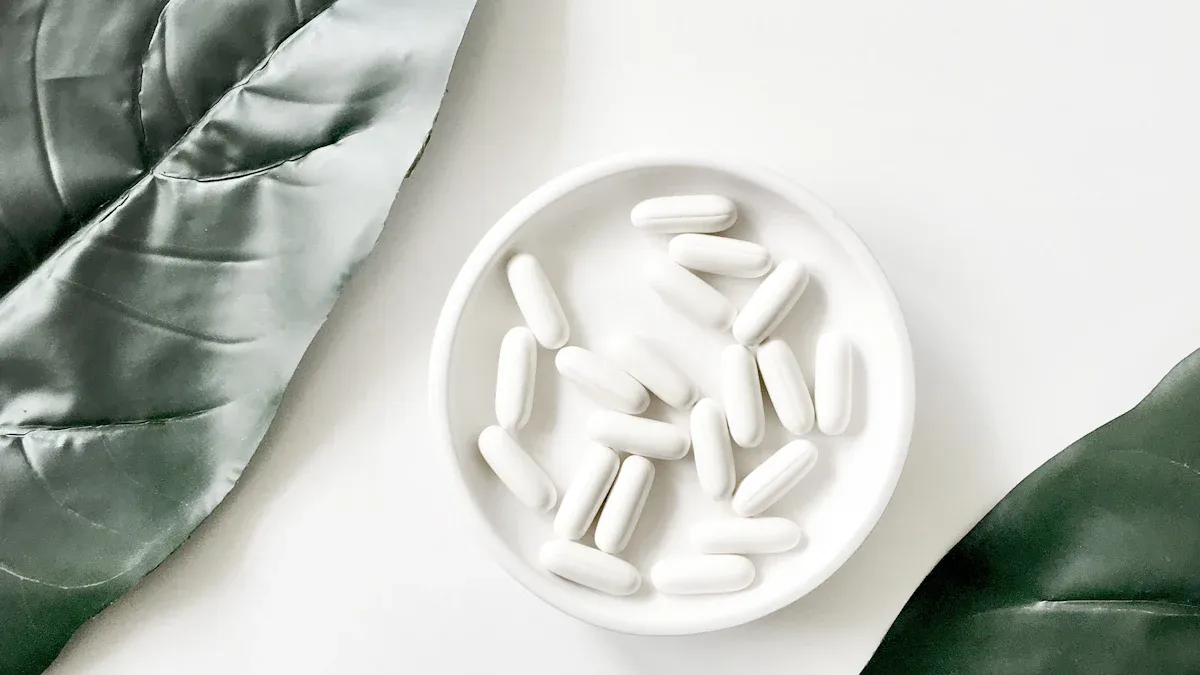Why Chemotherapy Isn’t Just an IV Treatment

When you think of chemotherapy, you might picture an IV drip in a hospital setting. However, chemotherapy goes far beyond that. It can be delivered in several ways, including oral pills, topical creams, and even injections into muscles or under the skin. For certain cancers, doctors use advanced methods like intraperitoneal chemotherapy, which targets cancer in the abdominal cavity. Studies show that while 70.2% of patients receive standard chemotherapy, 14.6% benefit from intraperitoneal treatments. These options allow doctors to tailor treatments to your specific cancer type and location, ensuring the best possible care.
Misconception: Chemotherapy is limited to IV administration. Detoxing doesn’t prevent cancer. Exploring these diverse methods can help you understand how chemotherapy adapts to your needs.
Key Takeaways
Chemotherapy isn’t only given through an IV. It can also be taken as pills, creams, or shots, making care more personal.
Taking chemotherapy pills is easy and works well like IVs. It often has fewer side effects, helping you feel better during treatment.
Creams for chemotherapy treat skin cancer without surgery. They have fewer side effects and can be used at home.
Special methods like intraperitoneal and intrathecal chemotherapy focus on certain cancer spots. This makes treatment work better with fewer side effects.
Treatment plans are made just for you. They match your needs and help you feel your best.
Methods of Chemotherapy Administration

Oral Chemotherapy
Oral chemotherapy involves taking cancer-fighting drugs in pill or liquid form. This method allows you to take your treatment at home, making it more convenient than traditional hospital visits. Studies show that oral chemotherapy can be just as effective as IV treatments. For example, data comparing the two methods revealed a tumor response rate of 35.8% for oral chemotherapy, compared to 23.4% for IV chemotherapy. Patients on oral treatments also experienced fewer side effects, such as peripheral neuropathy, which occurred in only 17% of cases compared to 57% with IV treatments. These benefits make oral chemotherapy a preferred option for many patients.
Topical Chemotherapy
Topical chemotherapy uses creams or gels applied directly to the skin. This method is often used for skin cancers, such as basal cell carcinoma. By targeting the affected area, topical chemotherapy minimizes exposure to the rest of your body, reducing the risk of systemic side effects. You can apply the treatment at home, which adds to its convenience. However, it’s essential to follow your doctor’s instructions carefully to ensure the medication works effectively. While this method is not suitable for all cancer types, it offers a non-invasive option for specific cases.
Intramuscular and Subcutaneous Injections
Intramuscular and subcutaneous injections deliver chemotherapy drugs directly into your muscles or under your skin. These methods provide a localized approach, which can reduce the risk of systemic side effects. For instance, subcutaneous administration of trastuzumab showed a higher efficacy rate (45.4%) compared to intravenous delivery (40.7%). However, injection-site reactions occurred in 11.1% of cases, highlighting the need for careful monitoring. Subcutaneous injections of bortezomib also demonstrated a lower rate of peripheral neurotoxicity (6%) compared to IV administration. These methods offer an alternative for patients who may not tolerate IV chemotherapy well.
Misconception: Chemotherapy is limited to IV administration. Detoxing doesn’t prevent cancer. Exploring these alternative methods shows how chemotherapy adapts to your needs and preferences.
Intrathecal and Intraperitoneal Chemotherapy
Intrathecal and intraperitoneal chemotherapy offer targeted approaches to treating specific types of cancer. These methods allow doctors to deliver cancer-fighting drugs directly to the areas where they are most needed.
Intrathecal chemotherapy involves injecting the medication into the cerebrospinal fluid (CSF). This method is particularly effective for cancers that affect the brain or spinal cord. By bypassing the blood-brain barrier, intrathecal chemotherapy ensures that the drugs reach the central nervous system. You might receive this treatment through a lumbar puncture or an Ommaya reservoir, a small device implanted under the scalp. This approach minimizes systemic side effects, as the medication stays localized.
Intraperitoneal chemotherapy, on the other hand, targets cancers within the abdominal cavity, such as ovarian or peritoneal cancer. Doctors administer the drugs directly into the peritoneal cavity, where they can attack cancer cells more effectively. This method often works alongside surgery to remove visible tumors. Studies show that intraperitoneal chemotherapy can improve survival rates for certain cancers. However, it may cause localized side effects like abdominal pain or bloating.
Intrathecal and intraperitoneal methods highlight the versatility of chemotherapy. They demonstrate that treatment can adapt to the cancer’s location and your specific needs.
Many people still believe the misconception: Chemotherapy is limited to IV administration. Detoxing doesn’t prevent cancer. These advanced methods prove that chemotherapy is far more adaptable than you might think. They provide options that focus on precision and effectiveness, helping you receive the best care possible.
Misconception: Chemotherapy is Limited to IV Administration
Tailoring Treatment to Cancer Type and Location
Chemotherapy adapts to the type and location of cancer to improve its effectiveness. Different cancers respond differently to treatment, requiring tailored approaches. For example:
Aggressive tumors grow rapidly and resist many drugs, making targeted delivery methods essential.
Non-specific chemotherapy drugs often struggle to attack cancer cells without harming healthy tissues.
Selecting the right drug for the cancer type and stage ensures better outcomes.
Doctors use advanced techniques like intrathecal chemotherapy for brain cancers or intraperitoneal chemotherapy for abdominal cancers. These methods deliver drugs directly to the affected area, bypassing barriers like the blood-brain barrier. This precision reduces side effects and increases the chances of success.
Patient-Specific Needs and Preferences
Your unique needs and preferences play a vital role in chemotherapy decisions. Personalized treatments focus on genetic mutations and individual health factors. For example, certain drugs target specific mutations:
Mutation Type | Treatment | Example Drug |
|---|---|---|
BRAF | Inhibitor | Vemurafenib |
ALK | Blocker | Crizotinib |
PIK3CA | Inhibitor | Alpelisib |
These targeted therapies reduce side effects and improve your quality of life. Oral chemotherapy offers convenience, allowing you to take medication at home. Topical treatments provide non-invasive options for skin cancers. By considering your preferences, doctors can create a plan that fits your lifestyle and health goals.
Advances in Drug Delivery and Technology
Recent advancements in drug delivery systems have transformed chemotherapy. These innovations focus on precision and minimizing harm to healthy tissues. Examples include:
Nanoparticle-based delivery methods that localize drugs to cancer cells.
Targeted antibodies, like Herceptin, which improve outcomes for breast cancer.
Nanocarriers that enhance drug delivery while reducing toxicity.
These technologies make chemotherapy more effective and less invasive. They also challenge the misconception: Chemotherapy is limited to IV administration. Detoxing doesn’t prevent cancer. By embracing these advancements, you benefit from treatments that are tailored, precise, and patient-centered.
Benefits of Alternative Chemotherapy Methods

Convenience and Accessibility
Alternative chemotherapy methods offer greater convenience and accessibility compared to traditional IV treatments. Oral chemotherapy allows you to take medication at home, eliminating the need for frequent hospital visits. This flexibility can significantly reduce the burden of treatment on your daily life.
Studies analyzing 5,892 patients highlight the growing accessibility of alternative methods. For instance:
70.2% of patients received standard chemotherapy, while 14.6% opted for intraperitoneal therapy and 15.2% chose dose-dense chemotherapy.
Hospitalization rates for complications were lower for dose-dense chemotherapy (25.2%) compared to intraperitoneal therapy (34.7%).
Emergency department visits were also less frequent for dose-dense patients (20.3%) than for those receiving intraperitoneal therapy (26.3%).
These findings demonstrate how alternative methods can improve access to treatment while reducing the need for emergency care.
Reduced Side Effects
Alternative chemotherapy methods often result in fewer side effects, making treatment more tolerable for you. For example, oral chemotherapy has a lower incidence of peripheral neuropathy (17%) compared to IV chemotherapy (57%). This reduction in side effects can help you maintain a better quality of life during treatment.
Clinical trials also support the benefits of reduced dosing strategies. Patients who started on lower doses due to side effects lived longer and stayed on treatment longer. Initiatives like Project Optimus aim to optimize dosing to minimize toxicity and long-term side effects. These advancements ensure that you can receive effective treatment with fewer complications.
Improved Quality of Life
By reducing hospital visits and side effects, alternative chemotherapy methods can significantly improve your quality of life. Oral and topical treatments allow you to maintain your daily routine, giving you more control over your schedule.
A comparison of treatment methods shows that oral chemotherapy not only improves tumor response rates (35.8% vs. 23.4% for IV chemotherapy) but also extends median overall survival (27.9 months vs. 16.5 months). These benefits highlight how alternative methods can enhance both your physical health and emotional well-being.
Choosing the right chemotherapy method can make a meaningful difference in your treatment journey. With these options, you can focus on living your life while fighting cancer effectively.
Chemotherapy offers more than just IV treatments. You can benefit from alternative methods like oral pills, topical creams, or localized injections. These options provide flexibility and reduce the burden of hospital visits.
💡 Did you know? Oral chemotherapy can improve your quality of life by allowing you to continue daily activities while receiving treatment.
Advances in technology and personalized medicine now make treatments more precise. Doctors can tailor therapies to your specific needs, improving effectiveness and minimizing side effects. With these innovations, chemotherapy continues to evolve into a patient-centered approach that prioritizes your well-being.
FAQ
What is the most common method of chemotherapy administration?
The most common method is intravenous (IV) chemotherapy. Doctors deliver the medication directly into your bloodstream through a vein. This allows the drugs to travel quickly throughout your body to target cancer cells.
Can you take chemotherapy at home?
Yes, oral chemotherapy allows you to take pills or liquids at home. This method offers convenience and flexibility, reducing the need for frequent hospital visits. Always follow your doctor’s instructions for safe and effective treatment.
Are alternative chemotherapy methods as effective as IV treatments?
Yes, alternative methods like oral or intraperitoneal chemotherapy can be just as effective. Their success depends on the type of cancer and its location. Doctors choose the best method based on your specific needs.
Do alternative methods cause fewer side effects?
Many alternative methods, such as oral or topical chemotherapy, cause fewer side effects compared to IV treatments. For example, oral chemotherapy often reduces the risk of peripheral neuropathy, improving your overall quality of life.
How do doctors decide which chemotherapy method to use?
Doctors consider factors like the type of cancer, its location, and your overall health. They also take your preferences into account. Personalized treatment plans ensure the most effective and comfortable approach for you.
💡 Tip: Always discuss your options with your doctor to understand which method suits you best.
See Also
Exploring Symptoms And Treatment Options For Choroid Plexus Carcinoma
Recognizing Symptoms And Treatment Approaches For Duodenal Cancer
Defining Choriocarcinoma And Its Effective Treatment Methods
Key Features And Insights About Cholangiocarcinoma Explained
Treatment Strategies For Acute Myeloid Dendritic Cell Leukemia
